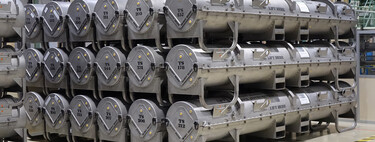Artificial intelligence (AI) data centers require enormous amounts of energy to operate, but ensuring a stable supply is not enough. Nowadays its origin is highly valued because a wrong choice can harm the sustainability goals from AI companies like Google or Microsoft.
In this context, nuclear energy is presented as a promising alternative since it is capable of producing electricity with low carbon emissions. The firm behind Windows has made its commitment to nuclear power official with the reopening of the Three Mile Island plant. Now it seems to be the search giant’s turn.
Google shows interest in nuclear energy
Sundar Pichai is traveling through Japan. During his visit to the Asian country, The CEO of Google received Pikachu at the company’s offices and left some interesting reflections on these times. He told local newspaper Nikkei who believes that AI is “a piece of underlying technology that runs through everything we do today”.
In this sense, he showed commitment to Google’s promise to achieve net zero emissions in all its operations and value chain by 2030. When we talk about net zero emissions we are referring to the almost total elimination of greenhouse gases, but with some margin for residual emissions.
Pichai has said that this is an ambitious goal that will require a lot of work. This is precisely where new energy sources for your data centers come into play. “We are now looking at additional investments, whether solar, and evaluating technologies such as small modular nuclear reactors“explained the executive.
At the moment we don’t have more details about Google’s plans with nuclear energy, but it is clear that the company needs to make some changes to its structure if it wants to reduce greenhouse gas emissions. Its emissions during 2023 They were 48% higher than those of 2019 due to the rise of AI.
Google has data centers distributed in different parts of the world. In some regions the outlook is more encouraging than in others. For example, most of its European infrastructure is powered by energy from low carbon sources. This changes substantially in the Middle East, Asia and Australia.
Images | Daniele La Rosa Messina | Alex Dudar
In Xataka | Bill Gates is building “the most advanced nuclear facility in the world” in a small town of 2,000 inhabitants
In Xataka | Generative AI seems stagnant, but Suleyman is clear that we are in the first “phase”: there are two left








![[Img #74758]](https://thelatestnews.world/wp-content/uploads/2025/01/Fuel-use-by-Paleolithic-hunter-gatherers-in-Eurasia-150x150.jpg)




![[Img #74758]](https://thelatestnews.world/wp-content/uploads/2025/01/Fuel-use-by-Paleolithic-hunter-gatherers-in-Eurasia-300x200.jpg)

Add Comment